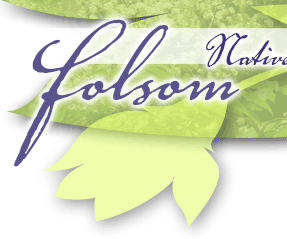|
Back to Decades Page
The Observations of John Larkin
- February 1997
Bloomed from early January to February
9th, 1997
(*) indicates number of months in bloom
- Chaptalia tomentosa,
Sunbonnet - Unusual plant that
grows mostly in moist to wet places. Basal leaves about 5" long,
all white, single, (daisy-like flowers) on 6-10" stems. Flower
nods at night, but opens the next morning and faces the sun. Seems to
prefer cold weather.
- Crataegus opaca, Mayhaw - Small
tree with isolated thorns, 1" single white flowers. Fruit
in May and June make good jelly. Adaptable to wet or somewhat dry locations.
Birds love the berries.
- Drosera brevifolia , Sundew
- Small plant with leaves forming a basal rosette about 1-1 ½” in diameter.
It was not affected by our cold spells. Leaves catch small insects on
their sticky leaves.
- Gelsemium sempervirens, Yellow Jessamine,
Carolina Jessamine - One inch yellow flowers on thin evergreen vine
that will climb trees, trellises or trail along the ground.
- Helianthemum carolinianum, Sun-rose.
(W.F.S.E.U.S.) - One inch 5 petalled yellow flowers with tinge of pink
near centers on 6-10" plants. Small leaves, soft hairs.
- Hexastylis arifolia, Wild Ginger
- Isn't blooming but cold didn't hurt plants.
- Houstonia patens, Bluets - Have
many more of these tiny, bright blue flowers in our otherwise drab lawn.
- Ilex decidua, Deciduous Holly
- Saw thousands of these plants with their bright red berries amongst
the bare shrubbery and trees on the roadsides of U.S. 71, south of Alexandria.
(2)
- Lamium amplexicaule, Henbit
- Saw the first of these low annual herbaceous plants with their multiple
purple blooms.
- Lantana montevidensis, Creeping Lantana
(Introduced) - After being nipped by the cold, it is starting to bloom
again.
- Lirodendron tulipfera, Tulip Poplar
- These rather attractive blooms are only in the upper parts of the
tree, but by using my binoculars, I can see the flowers are open.
- Lonicera fragrantissima, Winter
Honeysuckle (Introduced) - This winter blooming white
flowered honeysuckle is not invasive, is not a vine and is still blooming.
- Lonicera sempervirens, Coral Honeysuckle
- Is just opening its first buds after taking a short rest.
- Mahonia bealei,
Leatherleaf Mahonia - This evergreen shrub still has
some yellow flowers and no part of the plant shows any sign of being
nipped by the cold.
- Nothoscordum bivale, False Garlic
- Doesn't smell like onion or garlic, even thought it is closely related
to the onion. ½” white six petalled flowers in terminal clusters.
- Oxalis rubra, Wood Sorrel (Introduced)
- A perennial herb with clover-like leaves. Flowers are nice
to look at, this time of year, but they are hard to get rid of.
- Prunus angustifolia, Chickasaw Plum
- Don't know where we can draw a line to call this plant a shrub or
a tree, but Brown calls it a shrub with dense thickets. My plant is
about 12' tall with about 12' spread. Small, white flowers are plentiful
and the fruit is edible.
- Ranunculus fascicularis, Early Buttercup
- Perennial (means they live at least two years) herb with mostly basal
leaves and 1" glistening yellow flowers. Low growing. Will
form nice colonies if allowed to re-seed.
- Sassafras albidum - Is just opening lots of
buds at least that's the message I get from my binoculars.
- Senecio glabellus, Yellow Top
- Annual to three feet. 1" bright yellow flowers in mostly terminal
clusters. Are very showy in large numbers. Linda brought a bloom to
our last meeting. (2)
- Taraxacum officinale, Dandelion
- Everyone knows what dandelions look like so I won't elaborate. But
to me, I think they are a nice, bright yellow color. They are sometimes
called a bad weed, but my idea of a bad weed is a plant that either
smothers other plants or is hard to pull up. Dandelion is neither of
these.
- Taxodium distichum, Bald Cypress
- After Linda told me last month that they were in bloom, I got out
my crusty (or is it trusty) binoculars and I could see the tassels hanging.
If I'm not mistaken, the Bald Cypress is our state tree and the flowers
of the Magnolia (grandiflora) is our state flower. By the way,
Spanish Moss will grow in either one.
- Viola primulifolia, White Violet
and V, rosacea, Iavender/purple flowers. Both
are still in bloom.
Printable
February, 1997 Blooms (Adobe PDF)
|



















